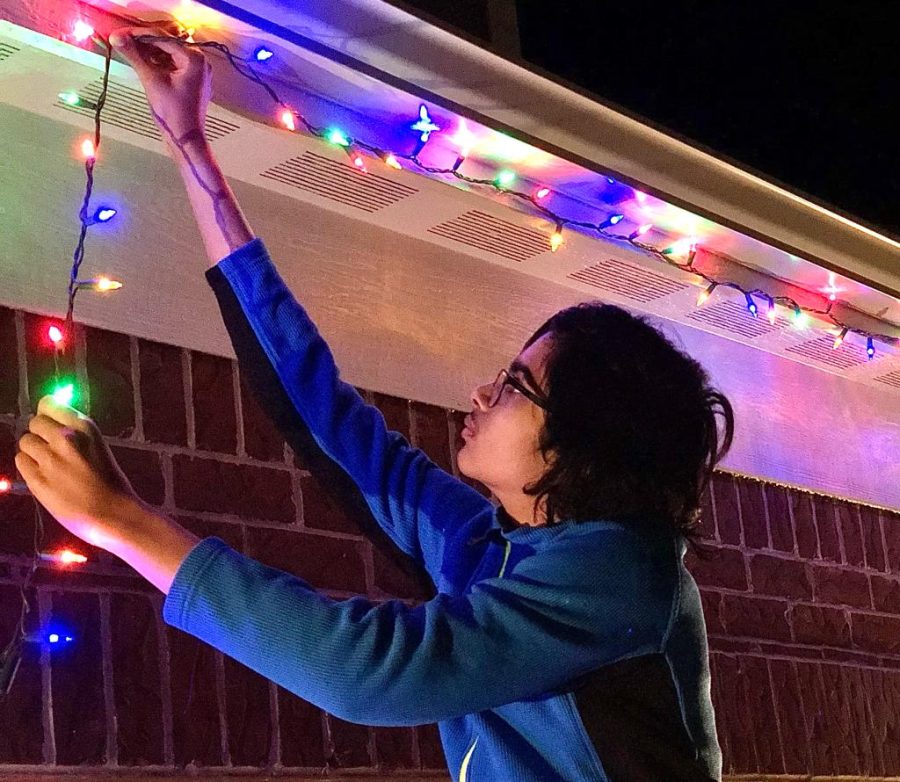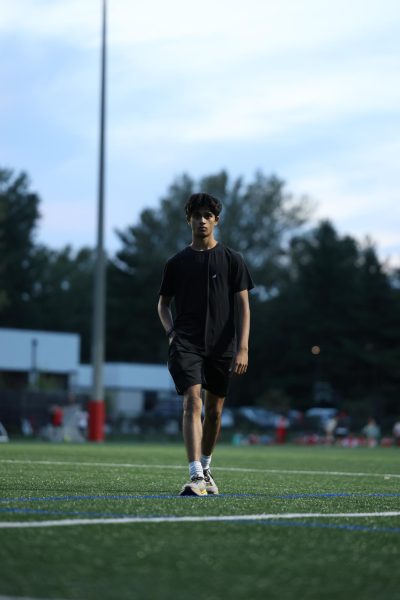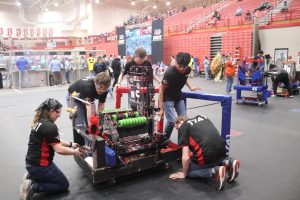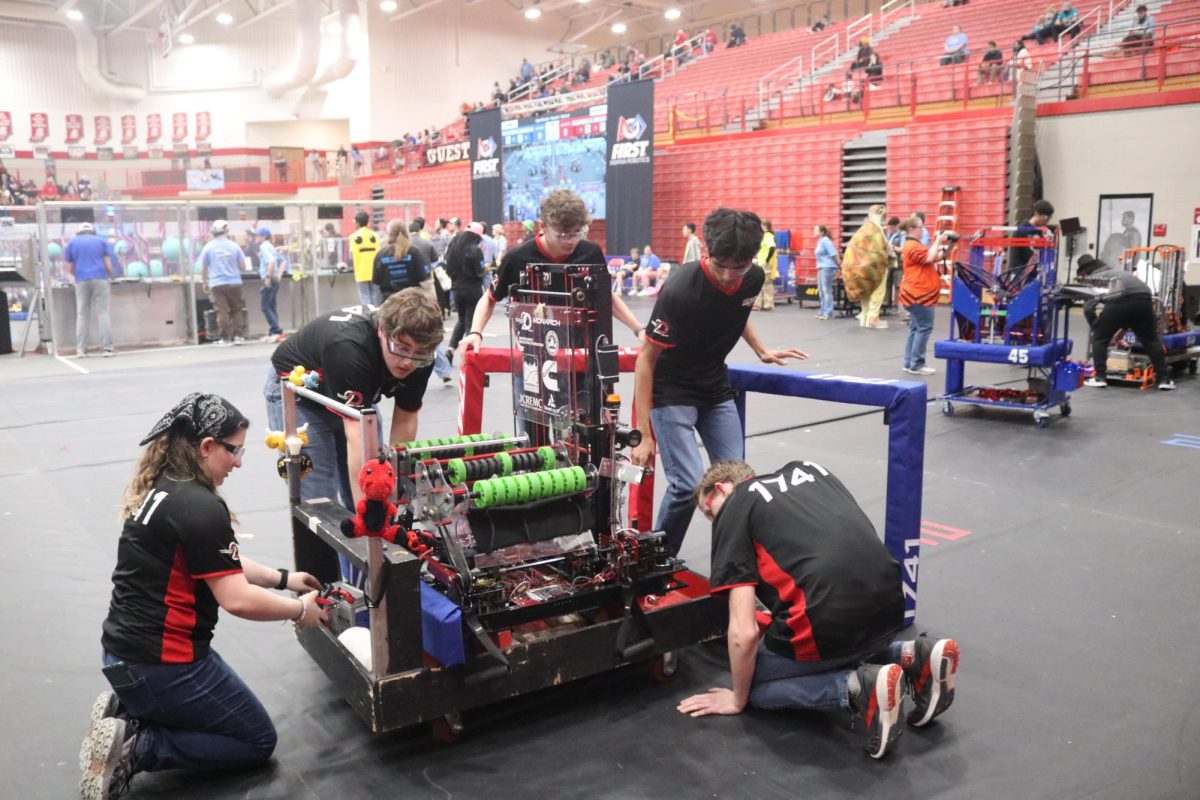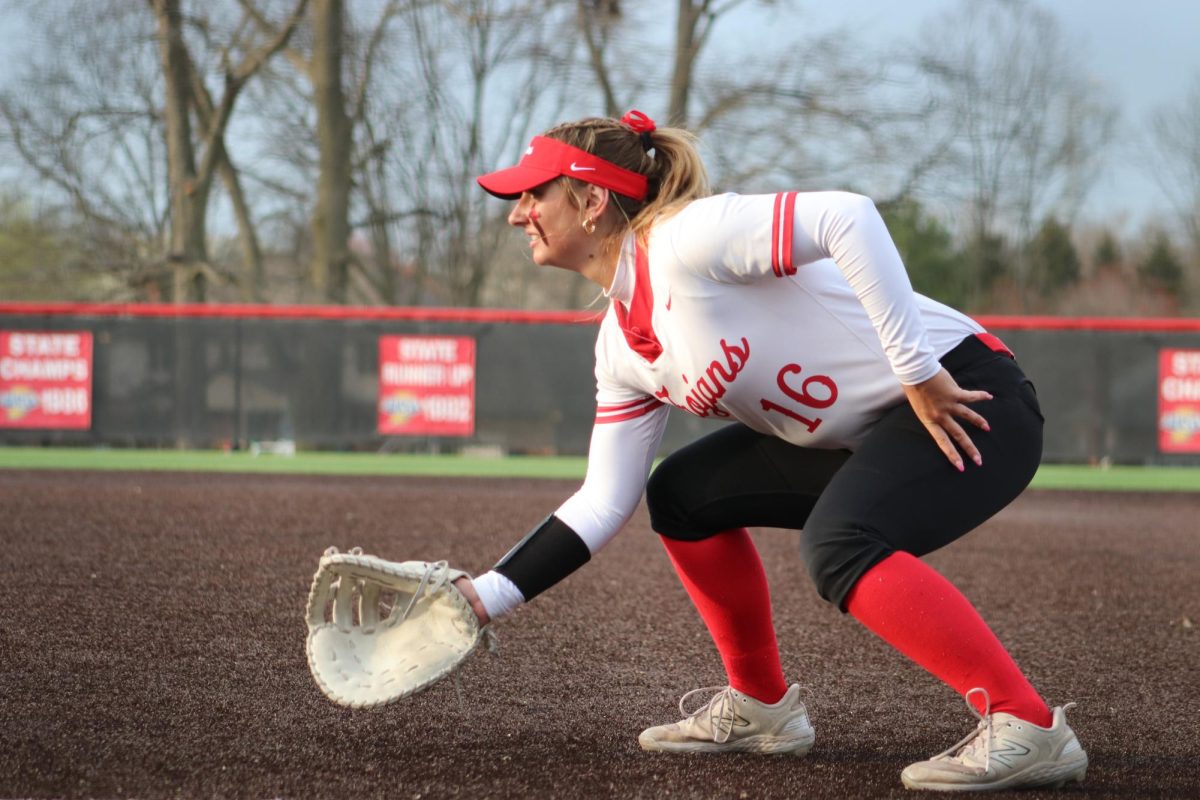Diwali: two continents, one holiday
Freshman Gourav Pany puts up lights in preparation for Diwali.
November 4, 2021
My late grandfather, who was deeply religious and wanted me to know everything about our traditions and holidays, was the first to introduce me to Diwali. One day, in second grade, he told me to sit down on the bed next to him, and he told me the story of Diwali, and how it all started with the most famous Hindu epic text: the Ramayana.
According to Hindu legend, the noble warrior king Rama, who was the 7th incarnation of the all-powerful god Vishnu, banished himself to uphold his father’s promise to his second wife, who said that Rama is to be banished from the city of Ayodhya (present-day New Delhi and capital of the Kosala empire, which spanned much of modern-day India and Pakistan) for fourteen years.
Through those fourteen years, Rama fought against demons and stayed away from civilization along with his dutiful second-youngest brother, Lakshman (also spelled Laxman), and his wife, Sita. However, his wife Sita was abducted by an evil demon king by the name of Ravana, who resided in modern-day Sri Lanka. Rama would later search for her and kill Ravana with the help of the vanaras, who were humanoid monkeys that were noble at heart.
At the time Rama had rescued Sita, the fourteen years of their banishment was over, and Rama flew with Sita on the Pushpaka Vimana, which was a flying chariot that Ravana happened to own.
When the lookouts of Ayodhya saw Rama, they alerted everyone in the city. The entire city was overjoyed that their noble and beloved prince had returned from his exile, and lit little candle-like objects called diyas to celebrate his return. This would later be known as Diwali, which means the festival of diyas, which literally translates to “The Festival of Lights.”
Although it is known by many as the ‘Indian version of Christmas,’ this is not entirely the case. Diwali and Christmas share some of the same basic characteristics, such as bright lights and decorations, as well as special food and the exchanging of presents. However, Diwali also has some traditions and underlying meanings that make it different from Christmas.
In my family, we almost always start Diwali a day early. This is because it is believed that one should keep their home clean for the goddess of wealth, Lakshmi, to bless them with good fortune. When I lived in India, our family used to do it all the time as my grandmother, who lived with us at the time, was tremendously motivated to clean the house properly.
Once we came to the United States, we tried to do it for the first couple of years, but since we lived in an apartment, it wasn’t placed in much emphasis since it only took about an hour to clean the whole thing. However, now that we have a house, we have planned to spend at least three hours total between us to clean the house.
Another thing that we do is that we keep the doors open to welcome the goddess of wealth into our house. We place diyas around the door, and light them on fire, akin to one lighting a candle. We also make a rangoli outside the door, which is basically a colorful decoration made out of naturally made powder, such as crushed turmeric and leaves.
In India, all of this was easy since we had a gate separate to the door, so we could leave the door open without the fear of a robbery. We could also light diyas outside the house because houses in India are predominantly made out of concrete, while our house here in the United States is made out of wood, which makes it difficult to arrange the diyas. Adding to that is the cold and the wind here, which snuffs out the diyas, while it is basically all-round summer for our house in India, where the low comes around 60 degrees.
As for the celebration itself, we light fireworks outside. In India, most of the roads are closed specifically for the fireworks during Diwali, and it is a lot of fun. In India, my cousins and I would play with ‘fire-sticks’ and ‘Beyblade-fireworks’ (that’s what we called them), and we would stay up all the way until 11, just playing with the fireworks. However, here in the U.S., with stricter firework laws and wooden houses, as well as a lawn, we don’t play with fireworks anymore. We do enjoy the fact that we get to video call our relatives from India and participate in singing competitions and trivia games.
Last, but not least, is the food! Different regions in India have different food for Diwali, but since my family is from the east, we focus mostly on the sweets. We usually make rasagollas, which are basically smooth spheres of cottage cheese that have been pressure cooked with caramelized sugar, making a sweet and juicy dish enjoyed by almost anyone who tastes it. I like to pride myself on the premise that my mother makes the best rasagollas on the planet.
Diwali, all-in-all, is my favorite festival of the year, as it combines fun and food with worship, the things that bring my family together from two different continents to celebrate one holiday.


